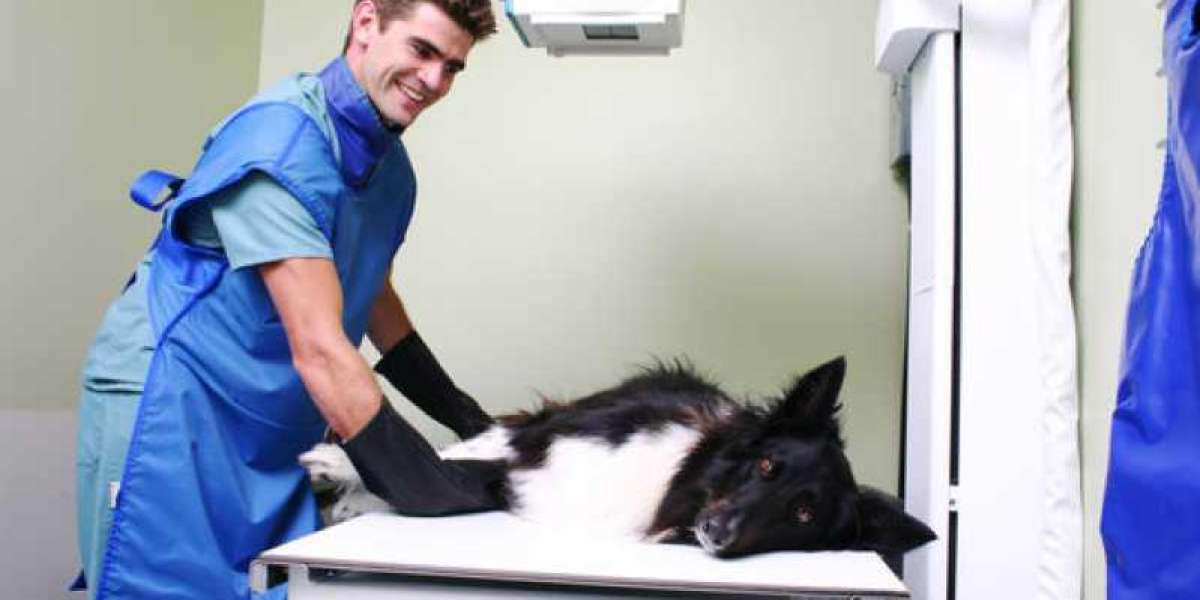If your pet has been identified with an arrhythmia, a Holter ECG can help decide the frequency and severity of the arrhythmia all through the interval it’s attached to your pet. The ECG should be recorded in an space as quiet and distraction-free as possible. Noises from clinical activity and different animals could considerably have an effect on a patient’s coronary heart rate and rhythm. In quadripeds, the magnitude and direction of electrocardiographic vectors decided from limb leads may be vastly altered by modifications in the position of muscular attachments of the shoulder girdle to the thorax. Large breed canines have larger risks of getting cardiac rhythm problems and a weak coronary heart muscle. On the opposite hand, there is a greater incidence of coronary heart valve issues in smaller breed canines compared to their larger counterparts. Pericardial effusion is usually seen in golden retrievers and different medium to large breed canine.
Si bien esta medida es una buena herramienta generalmente, se puede sobreestimar puesto que las cámaras cardiacas tienen la posibilidad de cambiar de tamaño sin alterar la manera de la silueta cardiaca.
 Use with care on aged animals or those affected by critical cardiac illness. You’ll need a prescription, however you will get Previcox chewable tablets by way of Chewy in a range of pack sizes and strengths. Dr. Jo de Klerk is a board-certified veterinarian, registered with each the RCVS and the SAVC. She graduated with an honors diploma in Veterinary Medicine from the distinguished Royal Veterinary College in London in 2014. She then went on to finish a Master's degree in Tropical Animal Health by way of the Institute of Tropical Medicine, and she’s now pursuing a PhD in Life Sciences with the University of Warwick.
Use with care on aged animals or those affected by critical cardiac illness. You’ll need a prescription, however you will get Previcox chewable tablets by way of Chewy in a range of pack sizes and strengths. Dr. Jo de Klerk is a board-certified veterinarian, registered with each the RCVS and the SAVC. She graduated with an honors diploma in Veterinary Medicine from the distinguished Royal Veterinary College in London in 2014. She then went on to finish a Master's degree in Tropical Animal Health by way of the Institute of Tropical Medicine, and she’s now pursuing a PhD in Life Sciences with the University of Warwick.Deramaxx for dogs
Zyrtec is a extremely popular brand used to treat allergy symptoms in people, but it’s additionally been used in canine for the same purpose, significantly in circumstances of persistent dermatitis. Pepto-Bismol falls into much the same category as Imodium mentioned above. It is among the safer human meds for canines, however only for certain canine with particular circumstances, and solely beneath veterinary supervision. These factors include your dog's overall well being, other medicines being taken, breed, measurement, análises clíNicas veterinária and age. You should never give anything to your pet that isn't supposed for them without consulting a veterinarian first. It’s important to note that many components can render "safe" human drugs to be unsafe for canines.
Can Benadryl® Be Used for Dog Allergies?
Humans and canines differ in the method in which their bodies process and react to medications. Your finest wager to ensure the efficacy of human medication in canine is to ask your veterinarian for the best dosage. It is also the best way to reduce or altogether forestall potential unwanted side effects. Naproxen has been utilized in horses at a dosage of 5–10 mg/kg, as quickly as to twice day by day. Bioavailability is lower (~50%) for naproxen than for other NSAIDs, and the elimination half-life is ~5 hours in horses. In dogs, the elimination half-life of naproxen is 35–74 hours, presumably because of in depth enterohepatic recirculation. Because of the prolonged half-life of naproxen, canines are extremely sensitive to its antagonistic effects.
Pericardial Effusion
The ECG machine merely data the electrical impulses from the canine and there are no unpleasant sensations neither is there any danger to the pet. A continuous murmur is most commonly the results of patent ductus arteriosus and occurs all through systole and diastole. A steady murmur varies in depth over time, typically being most intense on the end of ventricular ejection (the second coronary heart sound) after which reducing in depth through diastole. The term "to-and-fro murmur" describes a murmur that occurs each in systole and in diastole (eg, in an animal with subaortic stenosis and aortic insufficiency). The prognosis of heart illness sometimes entails evaluating the signalment, history, and physical-examination findings, as nicely as outcomes of diagnostic tests corresponding to radiography, electrocardiography, análises clínicas veterináRia and echocardiography.
Reading ECGs in veterinary patients: an introduction
Similarly, in horses it occurs with hypocalcemia, and in endurance horses it accompanies dehydration and electrolyte depletion. Concurrent auscultation and palpation of the heart beat should also be carried out to identify pulse deficits (premature beats, atrial fibrillation) and to assess the strength and character of the systemic arterial pulse. The present investigation generated some reference values of ECG in canine which is ready to help the clinicians to diagnose completely different cardiac abnormalities by way of ECG. Heart Rhythm - Analysis of the ECG outcomes may help identify the exact arrhythmia that's present and the probably underlying reason for the irregular coronary heart rhythm.
A basic regurgitant systolic murmur demonstrates a relentless intensity throughout systole and is often due to mitral or tricuspid regurgitation (eg, myxomatous degeneration of the mitral valve) or a ventricular septal defect. However, these murmurs may change intensity during systole. Pulmonary auscultation should be carried out (see Respiratory Sounds). Mucous membrane colour and refill time should be assessed, however usually they are normal even in animals with severe heart failure.
Diagnosis of Heart Disease in Animals
This electrocardiogram tracing is an example of atrial fibrillation. The average coronary heart fee (HR) is a tachycardia of 200 bpm, there aren't any consistent seen P waves, and the QRS complexes are narrow and predominantly constructive. The irregularity of the R–R interval is widespread with atrial fibrillation, but it should be famous that with a very speedy HR during atrial fibrillation, the R–R interval might become common. Electrocardiography is probably the most useful diagnostic approach for characterizing cardiac rhythms; nevertheless, correlating what is recorded on the tracing with the electrical activity in the coronary heart could be complicated. When any irregular heart rhythm is detected on scientific examination, an electrocardiogram (ECG or EKG) should be performed.
With an echo, the veterinary heart specialist or sonographer can view the center pumping in real-time. If your pet has coronary heart disease, there will be poor contraction of the center partitions, or the partitions of the heart will not be as thick as they should be. The ability to acknowledge potential history and clinical signs consistent with pericardial effusion can greatly improve the technician’s triage skills. Rapid detection of medical indicators of pericardial effusion, along with swift implementation of remedy, can result in a extra profitable end result for the patient.
Heart Murmurs in Animals
The three bipolar frontal airplane leads (I, II and III) and Einthoven’s triangle (red). In lead I, the right foreleg (RA) is negative and the left foreleg (LA) is constructive. In lead II the best foreleg (RA) is negative and the left hind leg (LL) is optimistic. In lead III the left foreleg (LA) is negative and the left hindleg (LL) is optimistic. The net depolarization shifting by way of the ventricles (green arrow) is often oriented towards the left hind leg (the positive pole of lead II) in canine and cats, and therefore the QRS complicated is predominantly constructive in lead II. With ECG machines that make the most of four electrodes, the electrode positioned on the best hind leg is the ground (it is not part of any of the leads). Standard electrocardiographic leads are used to create multiple angles to evaluate the waveforms that travel through the three-dimensional heart.
How Is a Canine ECG Performed?
Earlier reviews [25] additionally stated greater R wave amplitude in large breeds of dogs because of elevated ventricular surface space and thickened wall in giant breeds compared to smaller ones. The general incidence of arrhythmia depicted in the present investigation was barely decrease than the earlier reports of Kumar et al. [7] (21.92%) and higher than the reports of Sarita [20] (7.67%). The highest incidences of cardiac arrhythmias were reported in Pomeranian [7,20] but, in our investigation, we discovered that the incidence was highest in Spitz and Labrador. This could be most likely because of much less number of observations (2%) in this breed during investigation. The age-wise incidence of cardiac arrhythmias was in accordance with the sooner remark [21] reported the next incidence of cardiac arrhythmias in pups and older canine.








